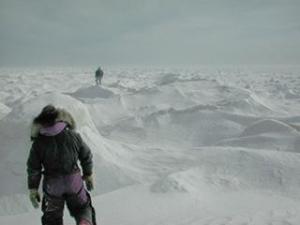Please note: Osher Rainforest will be closed for maintenance Jan. 14–16.
Science News
Lowest Arctic Maximum
March 28, 2011

Last week, scientists at the University of Colorado Boulder's National Snow and Ice Data Center (NSIDC) announced that this year’s Arctic ice maximum appears to be tied for the lowest ever measured by satellites, signaling more bad news for the area.
The Arctic sea ice always fluctuates with the seasons, with the maximum extent usually occurring between February 18 and March 31, before the “melting season” begins with rising spring temperatures.
The NSIDC research team believes this year’s annual maximum ice extent occurred on March 7. The maximum ice extent was 463,000 square miles below the 1979-2000 average, an area slightly larger than the states of Texas and California combined. The 2011 measurements were tied with those from 2006 as the lowest maximum sea ice extents measured since satellite record keeping began in 1979.
Because of the spiraling downward trend of Arctic sea ice extent in the last decade, some of the NSIDC scientists are predicting the Arctic Ocean may be ice free in the summers within the next several decades.
Virtually all climate scientists believe shrinking Arctic sea ice is tied to warming temperatures in the region caused by an increase in human-produced greenhouse gases in Earth's atmosphere.
The seven lowest maximum Arctic sea ice extents measured by satellites all have occurred in the last seven years, said CU-Boulder Research Scientist Walt Meier of the NSIDC, who participated in the latest study. “I'm not surprised by the new data because we've seen a downward trend in winter sea ice extent for some time now.”
Scientists believe Arctic sea ice functions like an air conditioner for the global climate system by naturally cooling air and water masses, playing a key role in ocean circulation and reflecting solar radiation back into space, said Meier. In the Arctic summer months, sunlight is absorbed by the growing amounts of open water, raising surface temperatures and causing more ice to melt.
The NSIDC will make a formal announcement of their findings next month.
To learn more about the declining Arctic, please watch our recent Science in Action video about NOAA’s annual Arctic report card.
Image courtesy of University of Colorado